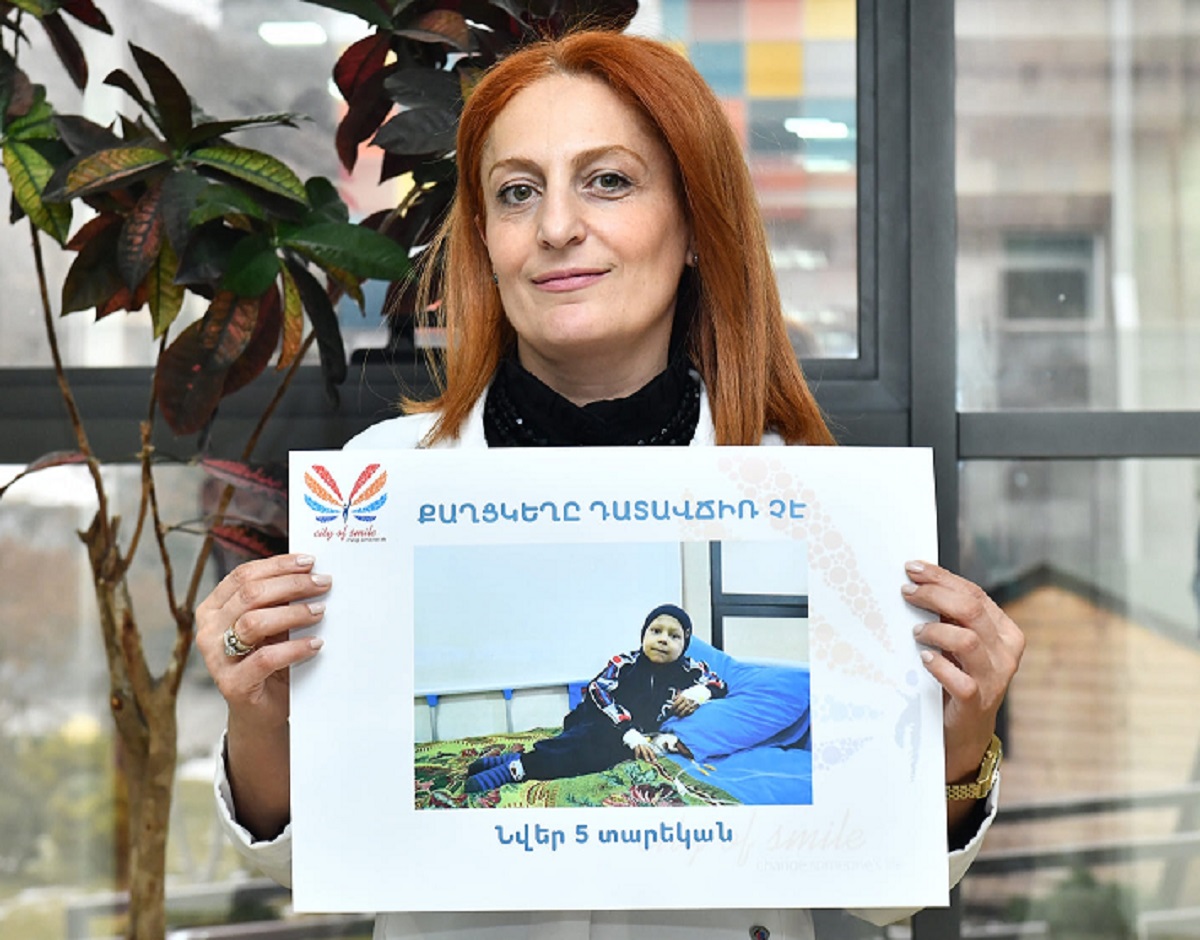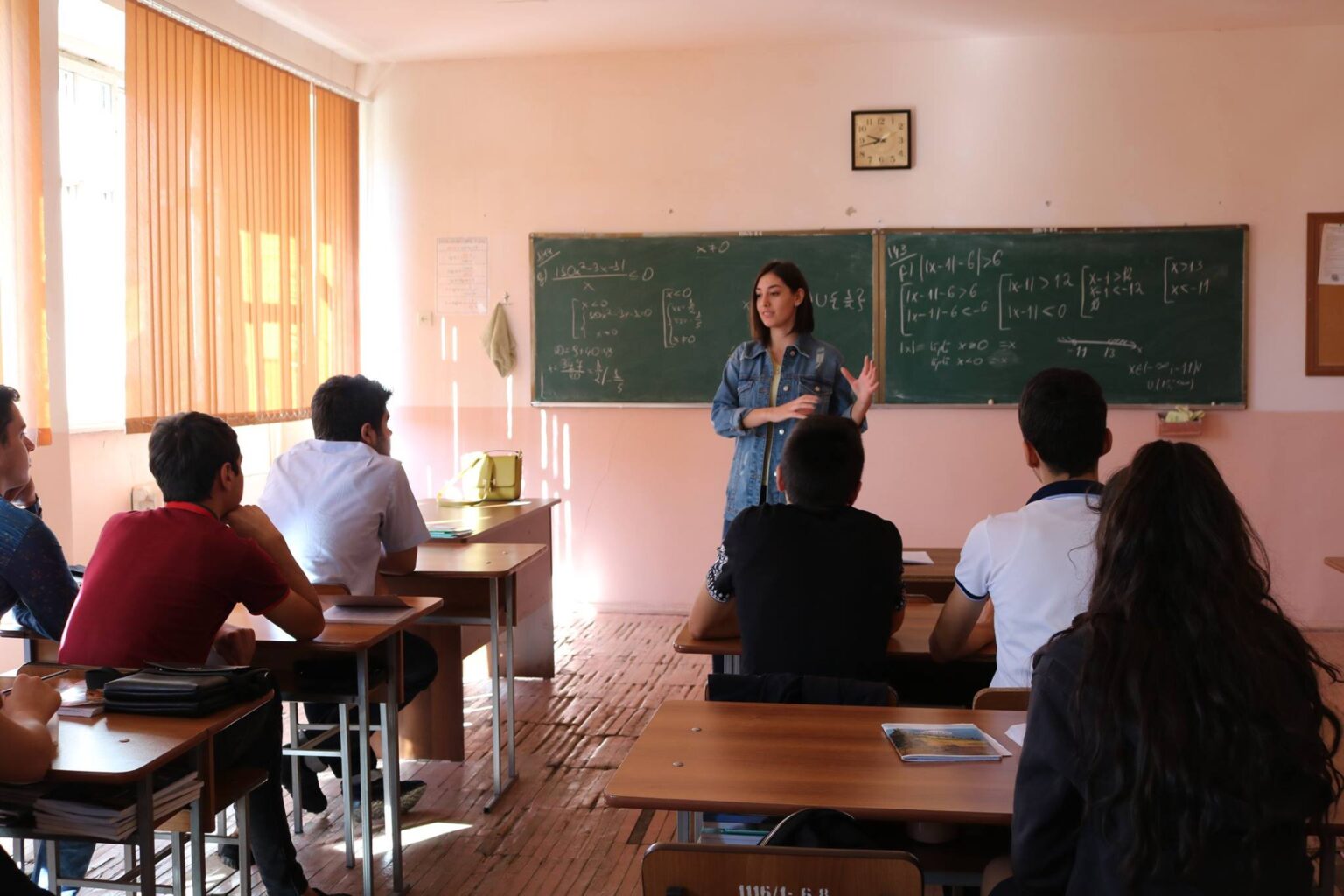Rural school in Armenia where work is part of the curriculum
Work training at Amberd school
In village of Amberd, located 25 km from Yerevan, learning how to work is an integral part of the curriculum. The school thus reduces costs and educates the young in the value of work and community effort.

- “Investments are needed for the ‘resuscitation’ of education in Armenia” – teachers and experts
- “Talking about opening Russian schools in Armenia is a form of pressure.” Opinion
- В Армении предпочитают не говорить о сексуальном насилии над детьми
After school – work in the gardens
On the school grounds there are grape, peach, apricot and plum trees, all planted and raised by students. Not far from the school building there are bee hives, a future fruit dryer is being built, and next to that is a woodworking shop.
“We asked ourselves an important question: what do we want to teach children, and will they use this knowledge in their lives or not? Today, villages face various problems related to agriculture. We proved to our fellow villagers that we can cultivate gardens as well as they could and using new technology. We’re already moving into harvesting — the fruit drying shop will be ready soon,” school principal Zohrab Maghakyan says.
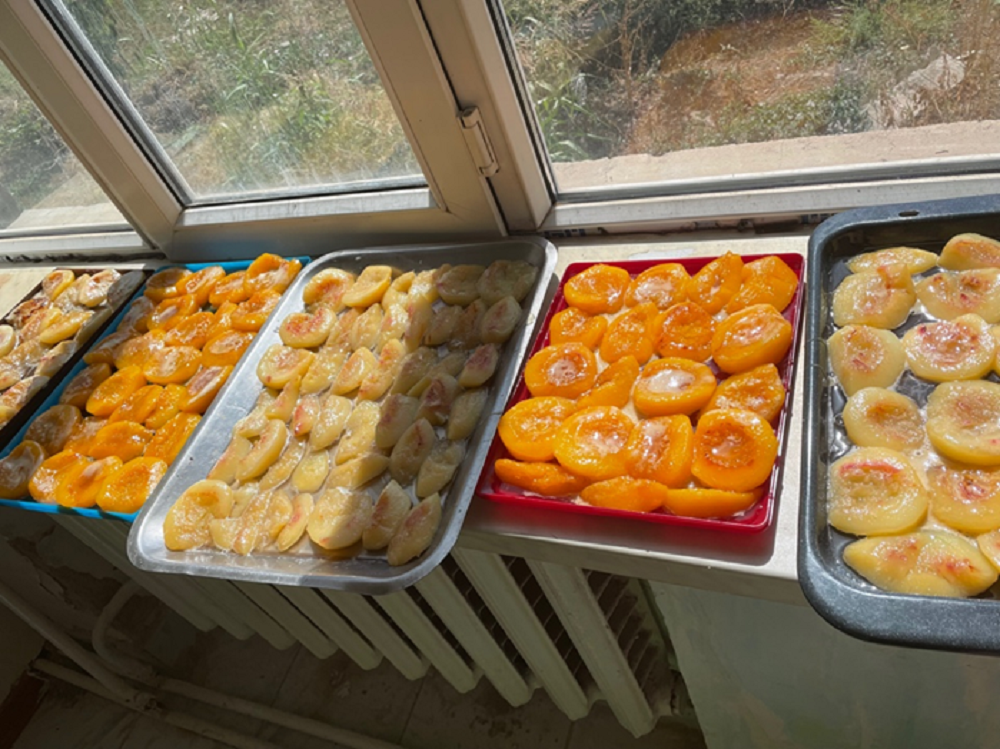
The idea to create his own garden came to Maghakyan in 2012, when the UN World Food Program launched the Free Food for Students project at the school.
“I thought, what are we going to do when the project is over? In a sense, this fear prompted the idea. The answer to my question led me to the idea that the school should become at least partially self-sustaining; we wanted to provide meals up to the fourth grade,” Maghakyan, who has been running the school for eleven years, says.
He says that under the National Food program, the government allocates 151 drams (38 cents at the current exchange rate) for each student. This project is for elementary students.
“When I first heard this sum at the training, I began to think what could be done with it. But if you now enter our dining room, you will be surprised how much we managed to get out of this amount, and most importantly — a hot dish for lunch. The state provides us with funding for the food of 93 students, the school feeds 157 students, including the 5th and 6th grades, even preschoolers in the project. In the near future we will be able to provide food for students of 7-8th grades,” he explains.
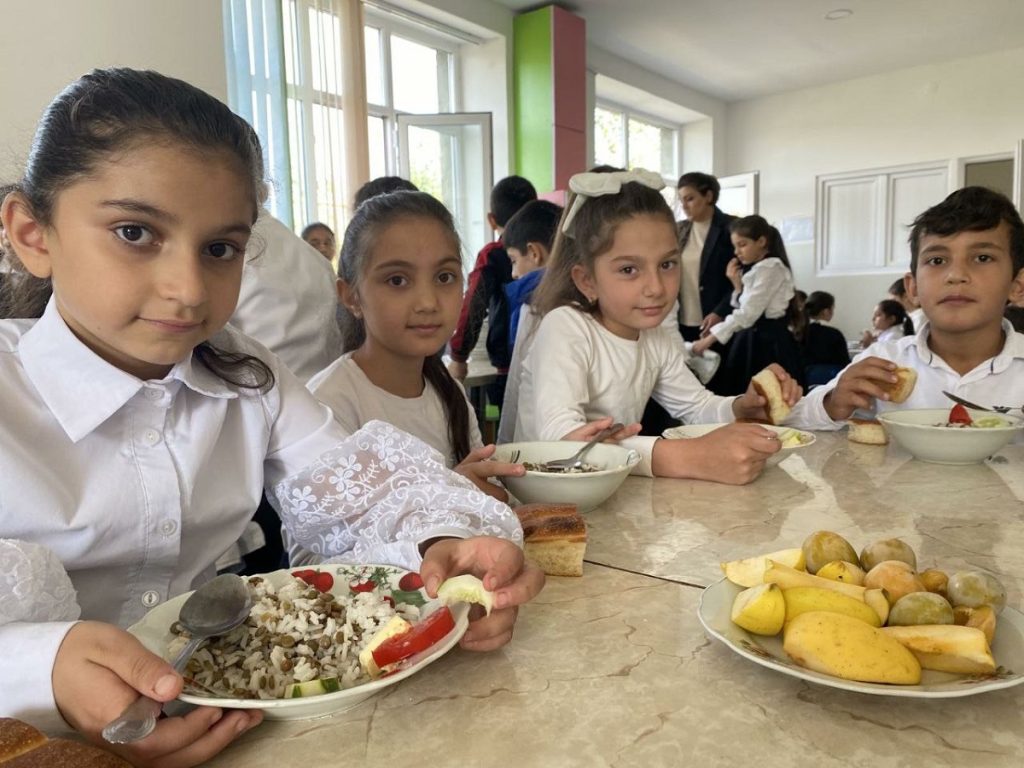
The autumn harvest has already ended, but immediately after classes the students rush to the gardens surrounding the school, as there is still tree tending to be done.
“I started my school development program in 2015. We cut down unsuitable trees around the school, planted a peach orchard two thousand meters away and brought in pumps. Now we are watering the peach orchard with a drip system. We have a 3,000 m vineyard from which we have harvested three tons of grapes this year. Our apricot orchard covers an area of 1,000 m, and about the same area is occupied by a plum orchard.
We serve dried fruits of our own production in the dining room, we also prepare compotes from them. At harvest teachers and students gather together. I would call it education based on work. And our school has proven the effectiveness of this technique,” Maghakyan maintains.
Successful business model to help parents
Maghakyan recalls that according to the Armenian constitution, secondary education in state schools is free and every child has the right to education.
“And I dream that our children really get education for free, since the constitution says “free education”. Calculate how much money a parent spends on one child of school age: on books, notebooks, clothes. And if a parent has no money, what can they di? Often children are not sent to school, which means that the child does not actually enjoy their right,” he says.
Children from socially disadvantaged families are given textbooks free, thanks to the business model that was developed at the Amberd school. Parents of particularly successful students do not pay for textbooks, either.

Ani Melikyan, a teacher of Armenian language and literature, believes that Amberd school is following an innovative path:
“We live in a time when the internet seems to give children everything. But our school gives them something they definitely won’t find online. Our children work in the garden after school, applying the acquired knowledge in their work. And we believe that it is not necessary for everyone to receive a higher education, although we do not diminish its importance. We try to prepare our students as much as possible for the life they will have after school.”
School uniform – from the income for the harvest
School uniforms for the 1st and 12th grades are sewn in the school’s small sewing workshop with the proceeds from the garden’s harvest and are given to students free of charge. There is a plan to provide free uniforms to all students over time.
“We could only make clothes for children from disadvantaged children, but this would lead to stratification, they would be pointed at. We’ve had parents who said they couldn’t buy clothes to children and so send them to school. And we decided to sew for all sizes. So all students are on the same level, we try to be honest with our children.”
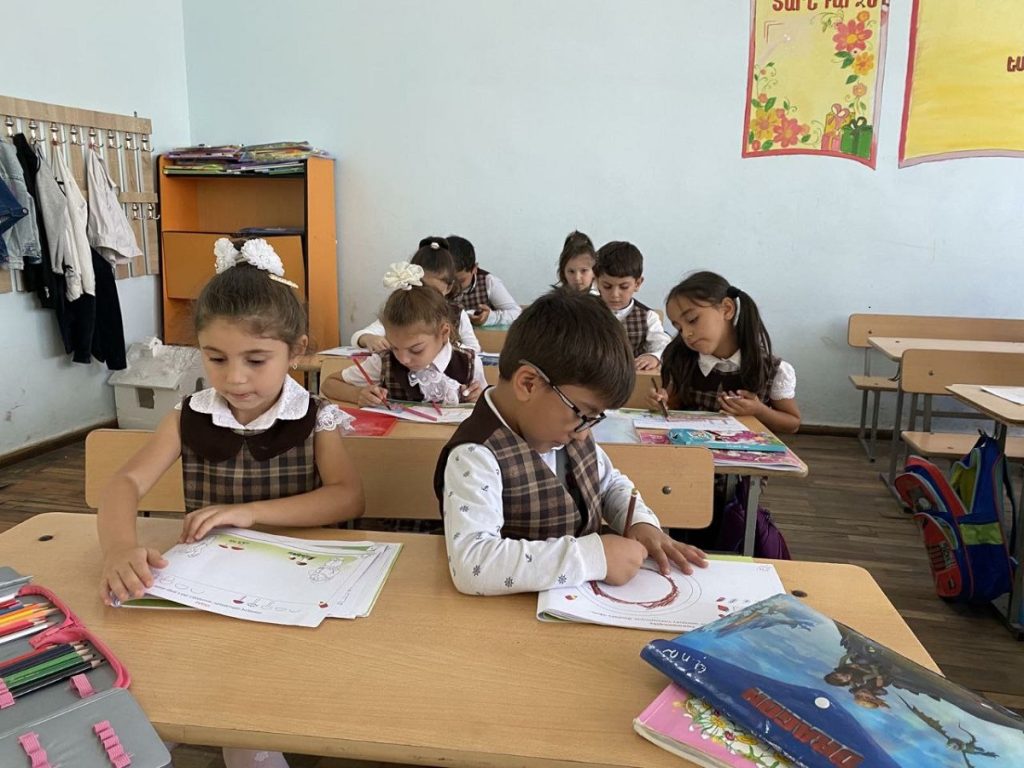
Students choose school uniform models themselves in different colors and styles and sew them together with teachers.
One of the school teachers, Anahit Abetyan, also takes part in sewing school uniforms. She says that one uniform costs about 10,000 drams ($25), a large amount when parents send two or three children to school:
“We are trying in every possible way to lighten the burden of parents. We sew uniforms together with schoolchildren, teach them to work as a team. In parallel with education, our students learn to work. Perhaps not all of them will go to universities, so it is very important to raise a hard-working generation.”
What’s next? Greenhouse and beekeeping
The principal says that now they have also undertaken to build a greenhouse on the school grounds where they will grow organic vegetables that will be used for cooking in the cafeteria:
“We’re doing beekeeping. In May the school was presented with five beehives, we increased their number to eleven. This year we got 30 kg of honey. Next year I plan to organize a tent camp for students in the mountains along with beehives. Now I’m trying to solve the issue of tents.”
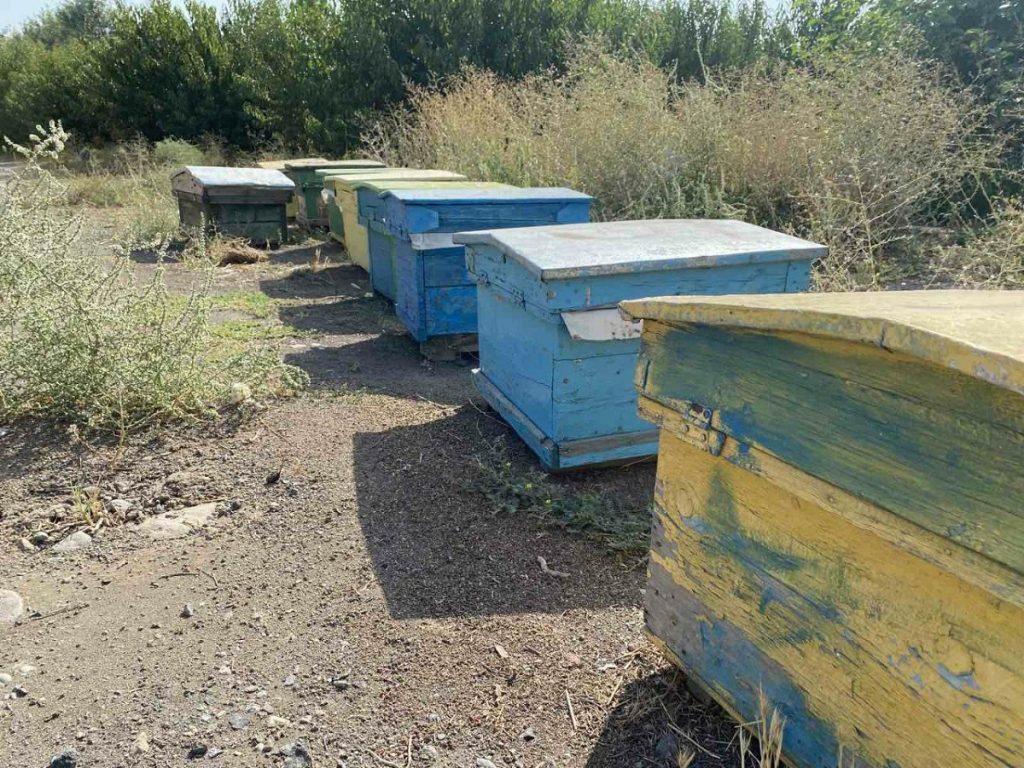
According to Zohrab Maghakyan, the system they have worked out has aroused interest from other schools, and many teachers come to Amberd to see how it works.
Labor lessons at Amberd school











